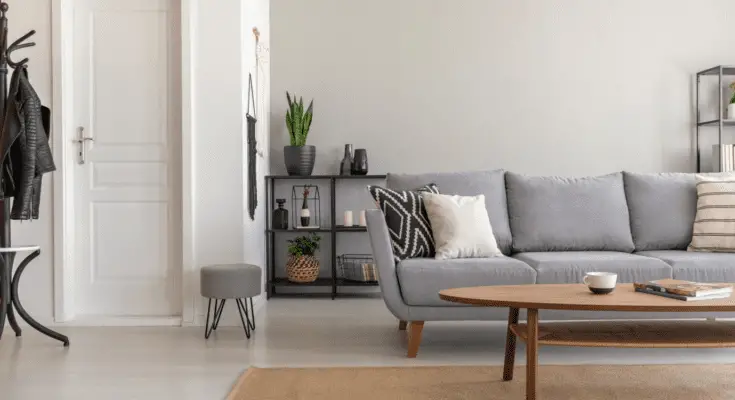Have you ever heard that the average home has between six and seven doors?
When thinking about your home’s design, choosing the right interior doors is a crucial decision. They will impact the overall aesthetics and functionality of your living space. Doors inside your home serve multiple purposes, from enhancing privacy and noise reduction to creating a seamless flow between rooms.
There are so many door options out there that your head could spin. Continue reading to explore the key factors you should consider when choosing interior doors for your home.
The Style and Design of Your Home Doors
The style and design of the interior doors work wonders for enhancing the overall ambiance of your home. Consider the existing interior design and architectural style of your house. Are you aiming for a modern and minimalist look or a more traditional and classic appeal?
There are numerous styles available, such as panel doors, French doors, barn doors, and pocket doors.
Panel doors feature raised or recessed panels and offer a timeless and versatile look that can fit various design aesthetics. French doors, with their elegant glass panels, lend an airy atmosphere.
Barn doors provide a rustic and trendy touch. Pocket doors are space-saving options that slide into the wall.
The Material of the Doors
The choice of material for your interior doors will impact their durability, maintenance requirements, and visual appeal. Common materials for interior doors include wood, fiberglass, and steel.
Wood doors offer a classic and warm look. They’re available in various wood species, such as oak, mahogany, and maple, each with its unique grain patterns and colors. However, wood doors require regular maintenance to prevent warping or rotting.
Fiberglass doors have a reputation for being durable against wear and tear. They can mimic the appearance of wood while providing superior insulation properties. Fiberglass doors are an excellent choice for high-traffic areas or locations exposed to extreme weather conditions.
Steel doors offer unmatched security, durability, and energy efficiency. They don’t need a lot of maintenance. Steel doors may lack warmth and charm, though.
The Interior Door Swing
Consider the swing direction of the door when selecting interior doors. With your layout, you can choose between inswing and outswing doors. You should click for pivot hinges for your convenience.
Inswing doors are the most common type and open into the room. They are suitable for areas with ample space. They don’t obstruct the adjacent furniture or walls when opened.
Outswing doors open outward and work great in rooms that aren’t spacious. Outswing doors are often used in narrow hallways, small bathrooms, or closets. Consider the location of adjacent doors and windows to create a smooth traffic flow.
The Functionality of Doors Inside
Each room has different functional requirements. Your choice of interior doors should align with these needs.
Do you want to maximize natural light and maintain an open feel? Consider doors with glass panels or frosted glass. These doors allow light to pass through while providing a degree of privacy.
You should also think about the soundproofing qualities of the doors. This matters most for bedrooms, home offices, or media rooms. Solid-core doors or doors with acoustic insulation properties can reduce the transfer of sound.
The Size and Configuration
Measure the dimensions of the door frame accurately to get a proper fit. Standard interior doors are often 80 inches in height. You may need to consider taller doors if you have higher ceilings, though.
Don’t forget to think about the width of the door and the configuration of the opening as well. Single doors are the most common. Double doors or wider doors may be more suitable for larger openings or areas where you want to create a grand entrance.
Double doors are often used for spaces like formal dining rooms or master bedrooms. Pocket doors, which slide into the wall, are excellent space-saving options for areas with limited space.
Carefully assess the available space and consult with professionals if needed to determine the optimal size and configuration of your interior doors.
The Maintenance and Durability
Consider the maintenance requirements and durability of the doors when making your selection. Wooden doors may require regular staining or painting to keep them beautiful. High-quality wooden doors can last for decades with proper care.
Fiberglass and steel doors are low-maintenance options. They’re awesome for busy households or areas with heavy use. For extra strength, the doors should have a durable finish that resists scratches and fading.
It’s also worth looking into the quality of the door hardware since these components can affect the longevity and functionality of the door. Invest in sturdy and reliable hardware that complements the door’s design.
Your Budget for Different Types of Doors
Establishing a budget is crucial when choosing interior doors for your home. The material, style, customization options, and additional features like glass panels or decorative elements will impact the price.
Wooden doors are more expensive than fiberglass or steel doors, but they offer a timeless and luxurious appeal. Keep in mind that investing in high-quality doors will boost the value of your property.
Seek out multiple quotes from reputable suppliers to find the best options that fit within your budget.
You Can’t Overlook These Factors When Choosing Interior Doors
Choosing the right interior doors can feel like a tricky situation. You’ll need to reflect on all kinds of factors to find the right doors for your unique home. With our guide, you can fall in love with the perfect interior doors.
Would you like to work on building a more fulfilling life? You’ll love relying on our blog. Save us to your bookmarks and check in each week to catch up on our articles.



